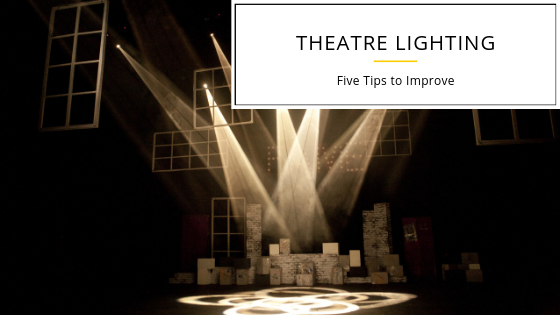
The actors are ready to play, the scrips have been rehearsed, and the director is already giving directions. You are the producer of this theatre play and feel overwhelmed with both excitement and nervousness.
A live show requires more expertise in every field of production than a recorded one. The reason is simple; you cannot edit what goes live. Therefore, a lot goes into making a successful theatre. From practices to set creation, it involves the collaboration of every team member to stir that performance magic. You may not hear anyone complimenting the stage lighting after the show, yet that does not lessen the importance of good lighting.
Whether it is a drama, musical performance, comedy, or a classic play, we are sharing five fundamental tips for the lighting crew to follow:
- Learn your play
It is important for the lighting crew to be fully acquainted with the play even though they will not be performing on stage. Talking over how actors infer the script and action in each scene will help the crew decide what kind of lighting will be required to bring life into the story.
- Know your equipment
Before you plan the setting up of the lighting system, it is important to familiarize yourself with the equipment. Get to know every piece to understand the possibilities with the available system. Sometimes, old equipment will require replacement. Other times, you might need to add special effects that your system cannot offer. At times, your lighting system may need repairing and maintenance. We recommend MPS Studios to avail their services of lighting repair. They offer complete lighting and electric repair and maintenance services to keep your equipment in top-notch condition.
- Use colors to set the mood
Since the human mind connects each color with a group of emotions and ideas, incorporating colored lighting at critical points in the play boosts the mood and even foretells what next is going to happen. Warm hues, such as orange, yellow, and red convey energy. Red is linked with love, outrage, and enthusiasm. Cool tones consisting of green, purple, and blue have a relatively curbed impact. Colors also have implications that are safely rooted in our minds, for example, purple and royalty.
- Add patterns for an extra dimension to the set
To turn solid lights into interesting styles, you can use attachments such as gobos. They are made using cut metal or colored glass. You do not need to incorporate everything in physical shape to add life. Props such as grass, flowered backdrop, trees, a starry sky, or even a stained window can be simulated using gobos. Rather than building these structures on your sets, spare time and cost by using patterned lights.
- Include movement to produce special effects
Theatre expects its audience to use their imagination, yet this does not mean you leave it all up to their thinking. Breathe life into a scene with delicately pouring rain, lazily floating clouds, and swirling snow. Such effects are possible by gobo rotators that enable the light patterns to move over the set at different speeds and directions. Another great lighting tool includes prism rotators that create multi-dimensional effects. They create greater depth by overlapping images and different colors.
Some contents depend on lighting cues while others are open for interpretation. We would suggest you attempt new things and dare taking risks with stage lighting. Thus, when it is time to come in action, use these five tips to make a happening theatre.
 Follow
Follow